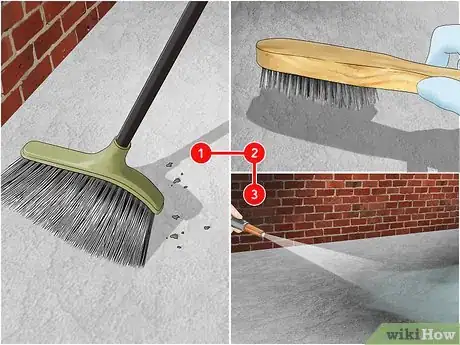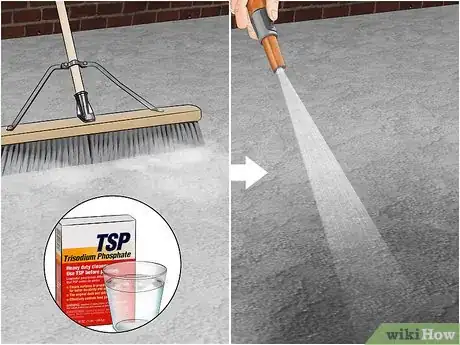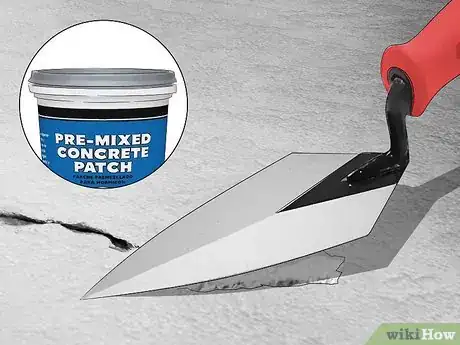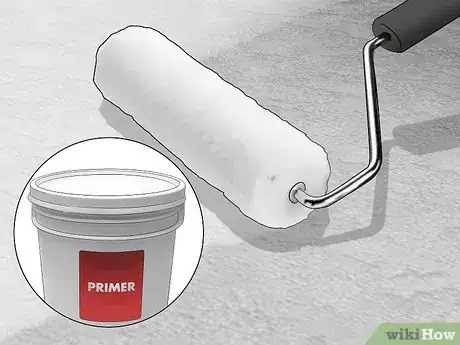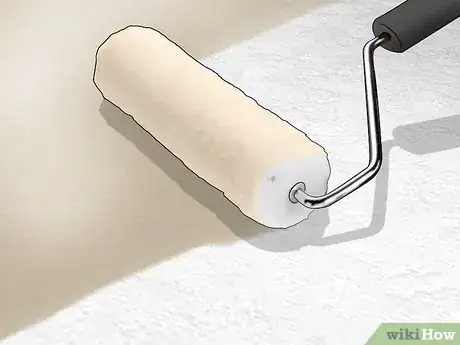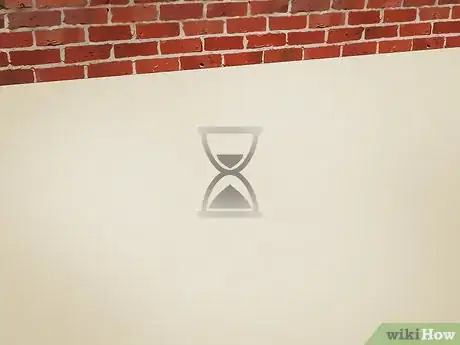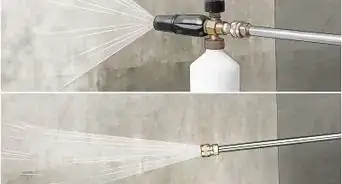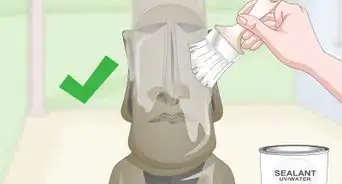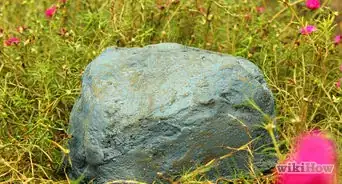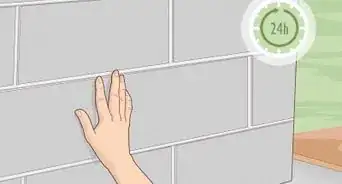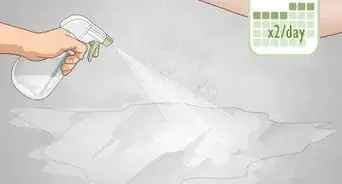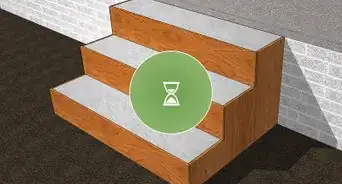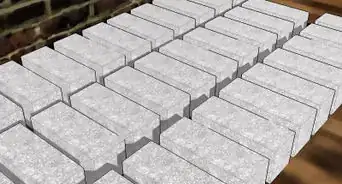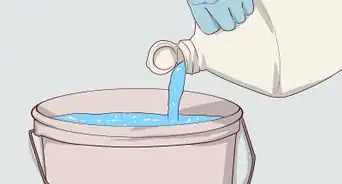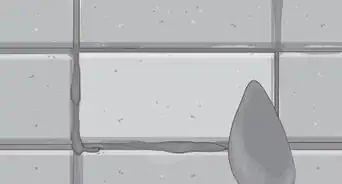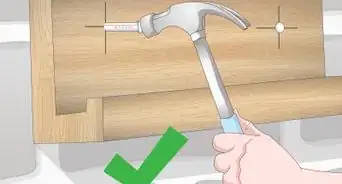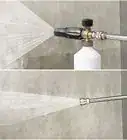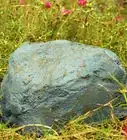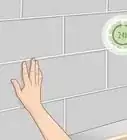This article was co-authored by Andre Kazimierski. Andre Kazimierski is a Painting Specialist and the Founder and CEO of Improovy, an on-demand house painting service startup. With more than 15 years of experience, Andre and the Improovy team use data and technology to streamline the home improvement process for homeowners and painting contractors. Andre started in the painting industry as a sophomore at Depaul University in Chicago, working with one of the nation’s largest painting companies to launch new cities and territories across the Midwest. Years later, he started 3rd Gen Painting and Remodeling and had a successful exit after growing the company to two different states.
wikiHow marks an article as reader-approved once it receives enough positive feedback. This article received 23 testimonials and 100% of readers who voted found it helpful, earning it our reader-approved status.
This article has been viewed 718,229 times.
Interior and exterior concrete surfaces do not have to remain a flat, boring shade of gray. Concrete can be made to look interesting and beautiful by applying a few coats of paint. Painting concrete is a simple and inexpensive task that can be completed by most homeowners. In order to successfully paint concrete or other masonry surfaces you must clean and prep the area properly, apply an appropriate paint, and allow adequate time for the paint to cure.
Steps
Preparing the Concrete
-
1Clean the concrete surface with soap and warm water, removing any old paint. First, sweep away any surface leaves, debris, and dirt.[1] Then remove any existing paint or gunk using a power washer or scraper and wire brush. Scrub away any dirt, grime, or gunk that is stuck to the concrete. You do not have to worry about stains, however, if they are set in and not some sort of object stuck onto the surface.
- Yank off any vines, moss, or other plant life covering the concrete.
- You want the surface to be as clean and bare as possible for the best coating of paint later on.[2]
-
2Remove dense areas of oil or grease with tri-sodium phosphate (TSP) to ensure that the paint doesn't discolor later. TSP can be purchased at most major home improvement stores. Simply mix it with water in the ratio illustrated on the packaging and wash away any oil stains, rinsing the cleaner off when you're done. Allow the concrete surface to dry completely before proceeding with the next steps.[3]Advertisement
-
3Apply concrete patch to fix any major defects such as cracks, gouges, or uneven surfaces. You want the concrete to be as smooth and regular as possible. Any breaks and cracks are places where moisture could potentially get under the paint, peeling it off your surface later on. Read the manufacturer's instructions to confirm proper drying time for the patch.
-
4Seal any indoor concrete to prevent moisture from coming through the cement. Concrete sealant is expensive, but it is the best way to ensure that you don't ruin your paint job soon after applying it. Concrete is very porous, which means trapped moisture in the concrete could rise and ruin the paint. Follow the sealant manufacturer's instructions for the proper preparation and application of the product.
- This is not as necessary if you are painting outdoor concrete.[4]
Painting Concrete
-
1Check the weather forecast to ensure you have 2-3 dry days in a row before painting outdoor concrete. You'll need to give the paint ample time to dry in between each coat. Different paints will have their own, specific drying times so always check the manufacturer's instructions. Do some homework, and only tackle this project when the weather is right for it.[5]
- In some cases, paint can take up to 24 hours to dry completely. That is why it's important to give yourself ample time to complete the painting process.
-
2Apply 1 layer of concrete paint primer with a paint roller. Before adding your color, you need to use primer to ensure that the paint will stick.[6] Apply a primer to the concrete to ensure strong adhesion of the paint. Again, follow the manufacturer's instructions to confirm the necessary application and drying time.
- If you are painting over an old color, or you are working outdoors, you may have better results with 2 coats of primer. Be sure to let the first coat dry fully before applying the second.
-
3Purchase the right paint for the right concrete.[7] Your best bet, when working with concrete, is to use masonry paint, which is formulated to contract and expand as concrete changes temperature. It is sometimes sold as elastomeric paint or elastomeric wall coating. Since it is much thicker than regular paint, you need to be sure to use a high-capacity roller or brush.[8]
-
4Apply a thin, even coat of paint using a paint roller. Start in one of the corners, or at the top of you are painting a wall, and work slowly and evenly across the entire surface. You don't need as much paint as you think in each layer -- you'll be adding 1-2 more layers once the first is done drying, so don't try and slather it all on now.[9]
-
5Return the next afternoon and apply a second coat of paint. Once the paint has dried overnight you can layer on another coat. You should add at least 1 more coat of paint, thinly, but you could add a third as well for a deeper color and a more even coating.
-
6Let the paint dry for 1-2 days before stepping on or placing anything on the concrete. Dry the final coat of paint for at least 24 hours before moving items onto or near the newly painted concrete to ensure a smooth, professional appearance.[10]
Expert Q&A
-
QuestionHow do you prepare concrete for painting?
 Andre KazimierskiAndre Kazimierski is a Painting Specialist and the Founder and CEO of Improovy, an on-demand house painting service startup. With more than 15 years of experience, Andre and the Improovy team use data and technology to streamline the home improvement process for homeowners and painting contractors. Andre started in the painting industry as a sophomore at Depaul University in Chicago, working with one of the nation’s largest painting companies to launch new cities and territories across the Midwest. Years later, he started 3rd Gen Painting and Remodeling and had a successful exit after growing the company to two different states.
Andre KazimierskiAndre Kazimierski is a Painting Specialist and the Founder and CEO of Improovy, an on-demand house painting service startup. With more than 15 years of experience, Andre and the Improovy team use data and technology to streamline the home improvement process for homeowners and painting contractors. Andre started in the painting industry as a sophomore at Depaul University in Chicago, working with one of the nation’s largest painting companies to launch new cities and territories across the Midwest. Years later, he started 3rd Gen Painting and Remodeling and had a successful exit after growing the company to two different states.
Painting Specialist Honestly, a really good masonry primer will set the tone to take any top coat necessary for your painting job!
Honestly, a really good masonry primer will set the tone to take any top coat necessary for your painting job! -
QuestionCan you paint directly onto concrete?
 Andre KazimierskiAndre Kazimierski is a Painting Specialist and the Founder and CEO of Improovy, an on-demand house painting service startup. With more than 15 years of experience, Andre and the Improovy team use data and technology to streamline the home improvement process for homeowners and painting contractors. Andre started in the painting industry as a sophomore at Depaul University in Chicago, working with one of the nation’s largest painting companies to launch new cities and territories across the Midwest. Years later, he started 3rd Gen Painting and Remodeling and had a successful exit after growing the company to two different states.
Andre KazimierskiAndre Kazimierski is a Painting Specialist and the Founder and CEO of Improovy, an on-demand house painting service startup. With more than 15 years of experience, Andre and the Improovy team use data and technology to streamline the home improvement process for homeowners and painting contractors. Andre started in the painting industry as a sophomore at Depaul University in Chicago, working with one of the nation’s largest painting companies to launch new cities and territories across the Midwest. Years later, he started 3rd Gen Painting and Remodeling and had a successful exit after growing the company to two different states.
Painting Specialist Not really! Since concrete is porous, you'll need to add a primer first. Also, you have to watch the pH level — if it's new concrete, it needs to age about 30 days before you can paint.
Not really! Since concrete is porous, you'll need to add a primer first. Also, you have to watch the pH level — if it's new concrete, it needs to age about 30 days before you can paint. -
QuestionCan I paint over limestone?
 Mark SpelmanMark Spelman is a General Contractor based in Austin, Texas. With over 30 years of construction experience, Mark specializes in constructing interiors, project management, and project estimation. He has been a construction professional since 1987.
Mark SpelmanMark Spelman is a General Contractor based in Austin, Texas. With over 30 years of construction experience, Mark specializes in constructing interiors, project management, and project estimation. He has been a construction professional since 1987.
Construction Professional First, make sure the stone is clean and dry. Then you will need to apply a good bonding primer and then use a hybrid enamel for the final paint. Apply 2 coats; be sure and give a full day to dry between coats.
First, make sure the stone is clean and dry. Then you will need to apply a good bonding primer and then use a hybrid enamel for the final paint. Apply 2 coats; be sure and give a full day to dry between coats.
Warnings
- If painting a concrete floor, use a floor texture additive that can be stirred right into the paint to prevent falls.⧼thumbs_response⧽
- Take necessary safety precautions when using tri-sodium phosphate, as it can cause injury to your eyes, lungs, and skin.⧼thumbs_response⧽
Things You'll Need
- Power washer
- Scraper
- Wire brush
- Paintbrush
- Paint tray
- Paint rollers
- Rags
- Tri-sodium phosphate
- Concrete patch
- Concrete sealant
- Concrete primer
- Concrete paint
References
- ↑ Andre Kazimierski. Painting Specialist. Expert Interview. 26 January 2022.
- ↑ http://www.houselogic.com/home-advice/painting/concrete-painting/
- ↑ http://www.doityourself.com/stry/paintconcretewallfl
- ↑ http://www.concretenetwork.com/concrete/interiorfloors/painting.htm
- ↑ http://www.houselogic.com/home-advice/painting/concrete-painting/
- ↑ Andre Kazimierski. Painting Specialist. Expert Interview. 26 January 2022.
- ↑ Andre Kazimierski. Painting Specialist. Expert Interview. 26 January 2022.
- ↑ http://www.houselogic.com/home-advice/painting/concrete-painting/
- ↑ http://www.doityourself.com/stry/paintconcretewallfl
About This Article
To paint concrete, start by cleaning it with soap and water and repairing any cracks or uneven surfaces. If you're painting indoor concrete, you'll also want to apply a concrete sealant so moisture doesn't mess up your paint job. Once you're done with that, apply a layer of concrete paint primer with a roller and let it dry. Then, apply 2 even coats of masonry paint using the roller, letting the paint dry for 24 hours after each coat. To learn how to remove grease and oil from the concrete before you paint it, keep reading!
